Bioluminescence, a captivating natural phenomenon, is the emission of light by living organisms through a chemical reaction within their bodies. This ethereal glow can be observed in various forms, from the mesmerizing flashes of fireflies to the enchanting trails of light left by certain marine creatures. Among the myriad manifestations of bioluminescence, few can rival the spectacle of Puerto Rico’s bioluminescent bays, where the waters come alive with a radiant, neon-blue luminescence that leaves visitors spellbound.
Decoding the Science Behind Bioluminescent Bays
The luminous display in Puerto Rico’s bioluminescent bays is attributed to the presence of vast concentrations of dinoflagellates, a type of single-celled, microscopic plankton. These remarkable organisms, scientifically known as Pyrodinium bahamense, are a unique blend of plant and animal characteristics, possessing chlorophyll that enables them to photosynthesize like plants while also exhibiting animal-like traits.
When disturbed or agitated, these dinoflagellates initiate a chemical reaction within their cells, resulting in the emission of a brilliant, neon-blue glow. This bioluminescence is believed to be a defensive mechanism employed by the dinoflagellates to ward off potential predators, making their presence known in the depths of the ocean.
The Rarity and Significance of Bioluminescent Bays
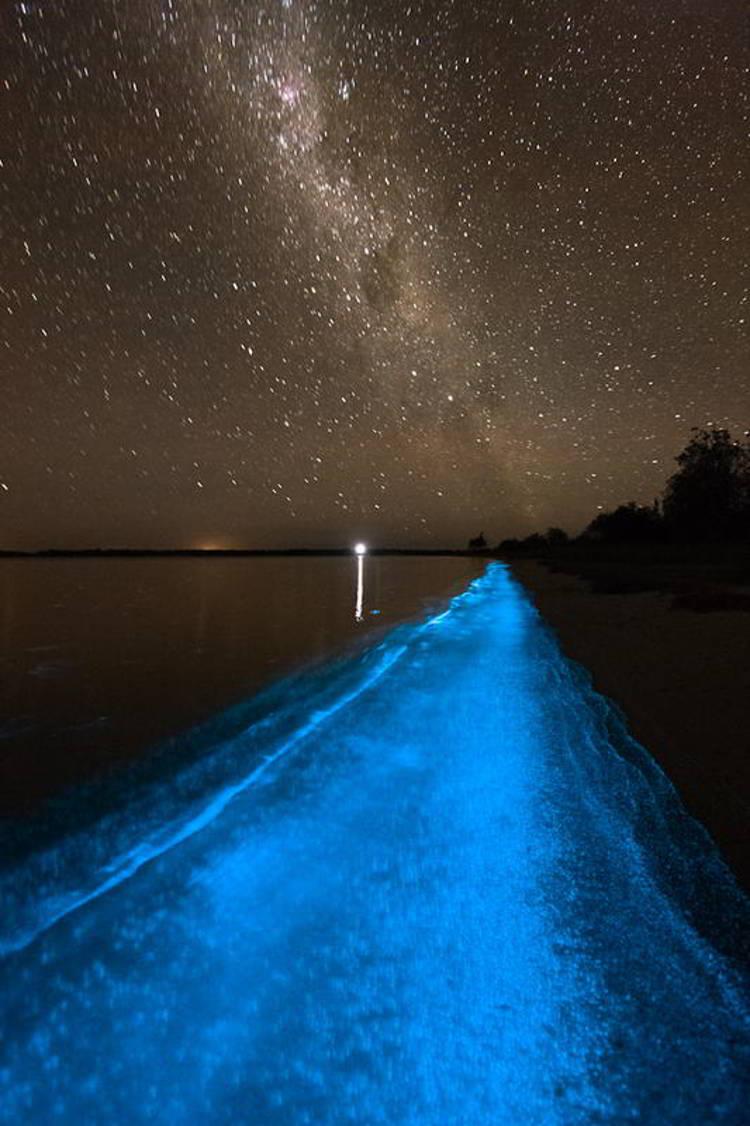 While dinoflagellates can be found in regular seawater, their concentrations are typically too low to produce a visible glow. However, in certain secluded bays with narrow openings to the sea, these microscopic organisms become trapped and multiply rapidly, creating an exceptionally high density that allows their collective bioluminescence to be observed with remarkable clarity.
While dinoflagellates can be found in regular seawater, their concentrations are typically too low to produce a visible glow. However, in certain secluded bays with narrow openings to the sea, these microscopic organisms become trapped and multiply rapidly, creating an exceptionally high density that allows their collective bioluminescence to be observed with remarkable clarity.
Bioluminescent bays are exceedingly rare, with fewer than 20 such ecosystems known to exist worldwide. Puerto Rico, a Caribbean island renowned for its natural wonders, boasts not one, but three of these extraordinary bioluminescent bays, making it a prime destination for those seeking to witness this captivating phenomenon firsthand.
Puerto Rico’s Radiant Trio: Laguna Grande, Mosquito Bay, and La Parguera
Laguna Grande: A Luminous Oasis in Fajardo
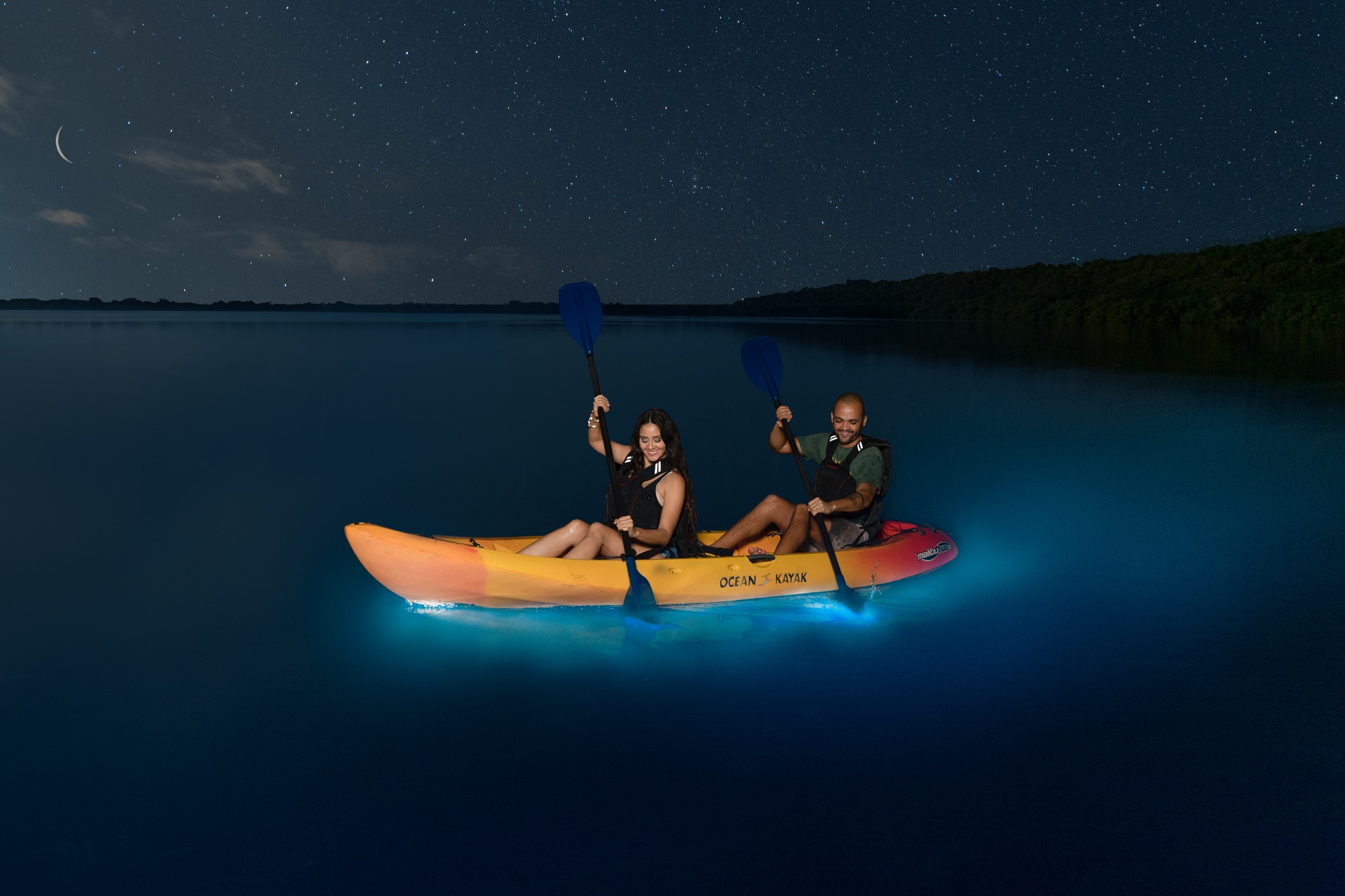 Nestled in the northeastern corner of Puerto Rico’s main island, in the municipality of Fajardo, lies Laguna Grande, a bioluminescent bay that offers visitors the opportunity to kayak through mangrove-lined waterways and experience the enchanting glow of the dinoflagellates. Conveniently located just an hour’s drive from the capital city of San Juan, Laguna Grande is easily accessible, making it a popular choice for tourists seeking a memorable encounter with nature’s luminous spectacle.
Nestled in the northeastern corner of Puerto Rico’s main island, in the municipality of Fajardo, lies Laguna Grande, a bioluminescent bay that offers visitors the opportunity to kayak through mangrove-lined waterways and experience the enchanting glow of the dinoflagellates. Conveniently located just an hour’s drive from the capital city of San Juan, Laguna Grande is easily accessible, making it a popular choice for tourists seeking a memorable encounter with nature’s luminous spectacle.
Mosquito Bay: Vieques’ Resplendent Jewel
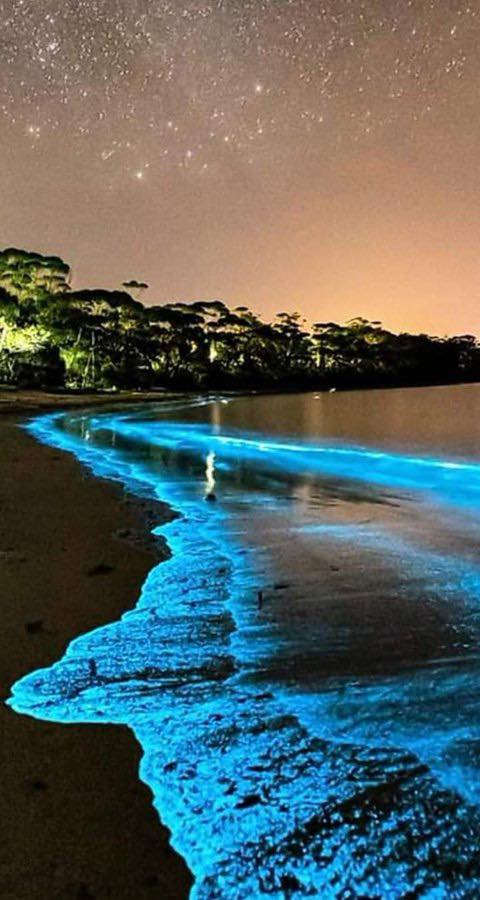 Situated on the smaller island of Vieques, off the eastern coast of Puerto Rico’s main island, Mosquito Bay is often hailed as the brightest and most radiant of the island’s bioluminescent bays. With an average depth of just three feet and a maximum depth of thirteen feet, this shallow bay offers an immersive experience, allowing visitors to fully appreciate the otherworldly glow of the dinoflagellates that envelop them.
Situated on the smaller island of Vieques, off the eastern coast of Puerto Rico’s main island, Mosquito Bay is often hailed as the brightest and most radiant of the island’s bioluminescent bays. With an average depth of just three feet and a maximum depth of thirteen feet, this shallow bay offers an immersive experience, allowing visitors to fully appreciate the otherworldly glow of the dinoflagellates that envelop them.
La Parguera: A Shimmering Sanctuary for Swimmers
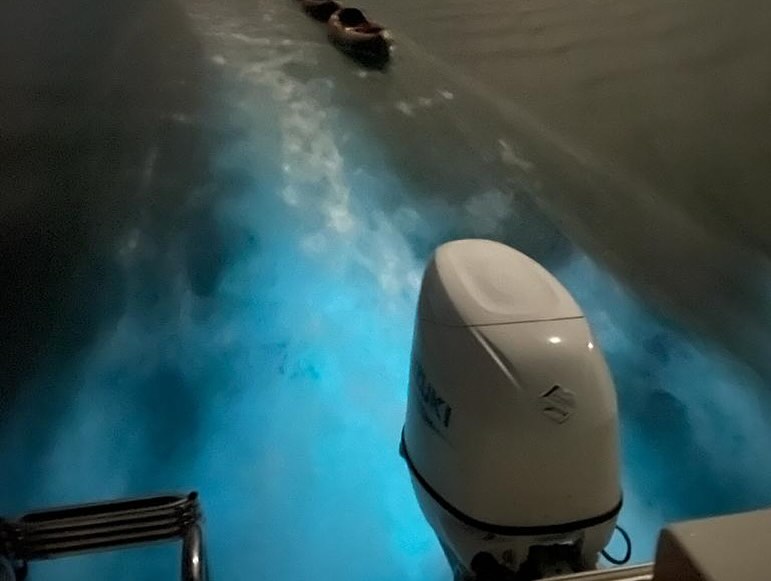 Located in the southwestern corner of Puerto Rico’s main island, in the municipality of Lajas, La Parguera stands out as the only bioluminescent bay in Puerto Rico where visitors are permitted to swim amidst the glowing plankton. While typically boasting a lower concentration of dinoflagellates compared to the other two bays, La Parguera offers a unique opportunity for an up-close and personal encounter with these luminous organisms.
Located in the southwestern corner of Puerto Rico’s main island, in the municipality of Lajas, La Parguera stands out as the only bioluminescent bay in Puerto Rico where visitors are permitted to swim amidst the glowing plankton. While typically boasting a lower concentration of dinoflagellates compared to the other two bays, La Parguera offers a unique opportunity for an up-close and personal encounter with these luminous organisms.
Choosing the Best Bioluminescent Bay Experience
When it comes to determining the best bioluminescent bay experience in Puerto Rico, opinions may vary. Many consider Mosquito Bay to be the brightest and most dazzling, while others favor Laguna Grande for its overall experience and accessibility, being just an hour’s drive from San Juan.
For those seeking convenience and a well-rounded adventure, Laguna Grande emerges as a top contender. Its proximity to the capital city, coupled with the opportunity to kayak through mangrove-lined waterways and witness the bioluminescent spectacle, makes it an attractive choice for many visitors.
Ensuring a Safe and Sustainable Bioluminescent Bay Experience
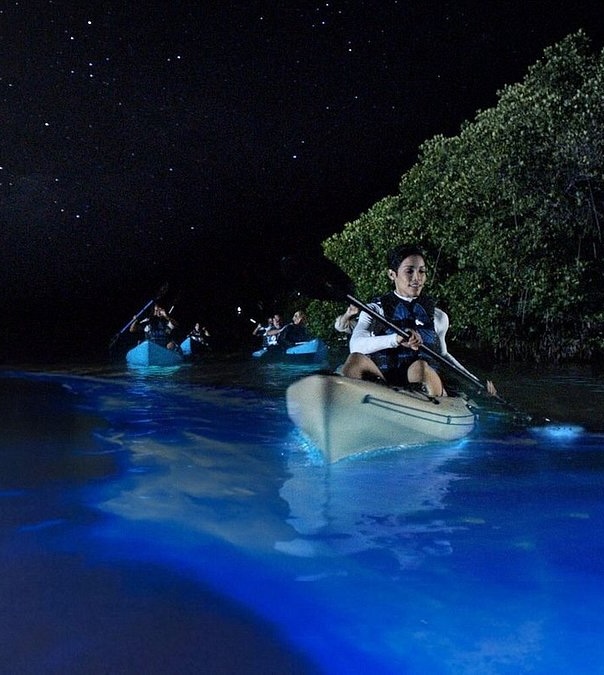 While the allure of swimming amidst the glowing dinoflagellates in Puerto Rico’s bioluminescent bays is undeniable, it is crucial to prioritize the safety and sustainability of these delicate ecosystems. Swimming is permitted only in La Parguera, as the Department of Natural Resources has implemented regulations prohibiting swimming in Laguna Grande and Mosquito Bay to protect the bays’ long-term health and preserve their luminous wonders for future generations.
While the allure of swimming amidst the glowing dinoflagellates in Puerto Rico’s bioluminescent bays is undeniable, it is crucial to prioritize the safety and sustainability of these delicate ecosystems. Swimming is permitted only in La Parguera, as the Department of Natural Resources has implemented regulations prohibiting swimming in Laguna Grande and Mosquito Bay to protect the bays’ long-term health and preserve their luminous wonders for future generations.
Furthermore, it is essential to note that visiting Puerto Rico’s bioluminescent bays requires a permit and the guidance of a licensed tour operator. These measures ensure that visitors can experience the bays in a responsible and eco-friendly manner, minimizing any potential disturbance to the fragile dinoflagellate populations.
Booking an Unforgettable Bioluminescent Bay Tour
To fully immerse yourself in the enchanting world of Puerto Rico’s bioluminescent bays, booking a tour with a reputable and knowledgeable operator is highly recommended. These guided experiences not only provide you with the necessary permits and transportation but also offer invaluable insights into the ecology, history, and cultural significance of these luminous natural wonders.
Capturing the Magic: Tips for Photographing Bioluminescent Bays
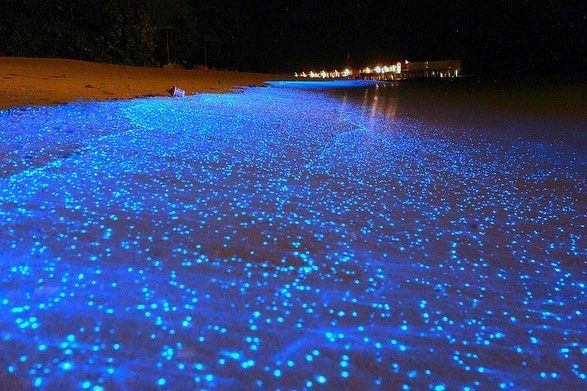 While the experience of witnessing Puerto Rico’s bioluminescent bays is truly mesmerizing, capturing the magic on camera can be a challenging endeavor. To maximize your chances of obtaining stunning photographs, consider the following tips:
While the experience of witnessing Puerto Rico’s bioluminescent bays is truly mesmerizing, capturing the magic on camera can be a challenging endeavor. To maximize your chances of obtaining stunning photographs, consider the following tips:
- Use a tripod or stabilize your camera on a solid surface to minimize blur caused by long exposure times.
- Experiment with different shutter speeds, typically ranging from 10 to 30 seconds, to find the optimal exposure for capturing the bioluminescent glow.
- Avoid using flash, as it can disrupt the natural luminescence and potentially harm the dinoflagellates.
- Consider incorporating elements like kayaks, paddles, or human subjects into your compositions to add depth and scale to your images.
- Be patient and embrace the trial-and-error process, as capturing the essence of bioluminescence can be challenging but incredibly rewarding.
Responsible Tourism: Preserving Puerto Rico’s Bioluminescent Bays
As you plan your visit to Puerto Rico’s bioluminescent bays, it is crucial to adopt a mindset of responsible tourism. These delicate ecosystems are not only natural wonders but also fragile environments that require our utmost care and respect.
By adhering to the guidelines set forth by local authorities and tour operators, you can help minimize your impact on the dinoflagellate populations and ensure that future generations can continue to witness the breathtaking beauty of these bioluminescent bays.
Remember, responsible tourism is not merely a choice; it is a responsibility we all share in preserving the natural treasures of our planet for years to come.
Beyond the Bioluminescent Bays: Exploring Puerto Rico’s Diverse Offerings
While Puerto Rico’s bioluminescent bays are undoubtedly a highlight, this Caribbean island is a veritable paradise brimming with natural wonders, cultural richness, and endless opportunities for adventure. From the lush rainforests of El Yunque National Forest to the vibrant streets of Old San Juan, Puerto Rico offers a diverse array of experiences for travelers of all interests.
Immerse yourself in the island’s rich history by visiting the imposing fortresses of San Felipe del Morro and San Cristóbal, or indulge in the culinary delights of Puerto Rican cuisine, where flavors from Spanish, African, and indigenous Taíno influences converge in a delectable fusion.
For those seeking outdoor adventures, Puerto Rico’s pristine beaches, verdant hiking trails, and world-class surfing destinations beckon. Whether you’re seeking adrenaline-pumping activities or tranquil moments of relaxation, this vibrant island has something to offer for every traveler.
Conclusion
Puerto Rico’s bioluminescent bays are more than just natural wonders; they are portals to a realm of enchantment, where the boundaries between reality and fantasy blur, and the waters come alive with a radiant, otherworldly glow. Whether you choose to explore the mangrove-lined waterways of Laguna Grande, immerse yourself in the resplendent brilliance of Mosquito Bay, or take a dip amidst the shimmering dinoflagellates of La Parguera, one thing is certain: this experience will leave an indelible mark on your soul, forever etching the memory of nature’s luminous spectacle into your mind.
So, embark on this journey, embrace the magic, and let Puerto Rico’s bioluminescent bays transport you to a world where the boundaries of imagination are limitless, and the wonders of nature reveal themselves in the most extraordinary ways.
—
Be sure to tag us in your photos and videos @resortcaribbean, and follow our socials: Instagram, Facebook, YouTube.

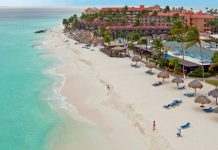
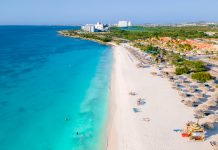

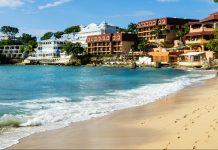


![What You Need to Know before Visiting Azul Beach Resort Negril Jamaica Gourmet All-Inclusive [Resort Review] Azul Beach Resort Pool](https://resortcaribbean.co/wp-content/uploads/2021/09/20210828_091210-2-100x70.jpg)
![Visiting Ocean Coral Spring – One of Jamaica’s Most Famous Resorts [Resort Review] Visiting Ocean Coral Spring - One of Jamaica's Most Famous Resorts](https://resortcaribbean.co/wp-content/uploads/2021/11/20211106_155809-scaled-e1716408051807-100x70.jpg)
[…] How Many Bioluminescent Bays are there in Puerto Rico? […]